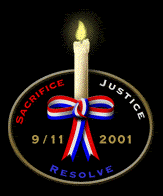MILITARY RECORDS & RESOURCES
WAR OF 1812
HOME | BACK
Description of the War of 1812
President Madison asked Congress to declare
war against the United Kingdom on 1 June 1812, for the following reasons:
impressment of US seamen; interference with US trade and also for the belief
that the British were responsible for the Indian warfare in the Northwest.
War was declared by Congress on 18 June 1812.
There was a large minority of people (in Congress and the country) who were
opposed to this war. New England, the country's great shipping section,
was fiercely against the war and interfered with it's progress by withholding
money and troops. Those most in favor of the war were from the South and
West.
The Treaty of Ghent was signed on 24 December 1814 and ratified by Congress on
17 February 1815. The terms of the treaty were: all land that had
been captured by either party was to be given up; everything was to be exactly
as it was before the war; any disputed points about boundaries were to be
settled by commissions from both countries. The treaty did not include
anything about the impressments, blockades or the British Orders in
Council--all the reasons that were originally given by President Madison when
he asked Congress to declare war in 1812.
Chief Battles:
Queenston Heights; 13 October 1812:
The American Army of more than 6,000 men, under the command of Generals
Stephen Van Rensselaer and Alexander Smyth, tried to invade Canada.
General Sir Isaac Brock, was the commander of the British Army of about
1,500 men. The British Army was scattered along the 34 miles of the
Niagra River. The Americans tried to cross the Niagra River from a
point opposite Queenston Heights. Only about 400 Americans were able
to get across the river and were then attacked by British troops under
Brock. Brock, considered by many to be one of the finest officers of
either army, was fatally wounded during this battle. The British were
able to drive the Americans down the river bank and the Americans, being
unable to get back across, eventually surrendered.
Raisin River; 22 June 1813: This battle took place on
the Raisin River, in Frenchtown (now known as Monroe, Michigan).
Kentucky troops that had been sent to drive out the British Army, were
defeated and captured by the British and Indians. The British left
with American prisoners, leaving behind any wounded Americans with the
Indians. The Indians killed all the wounded American prisoners.
Lake Erie; 10 September 1813: Master-Commandant Oliver
Hazard Perry commanded a fleet of 9 ships: 2 brigs with 20 guns each;
6 small schooners, each armed with 1 or 2 heavy guns and a captured British
brig. It was with this fleet that he was able to block, defeat and
capture the British fleet at the western end of Lake Erie. Perry's
victory was reported, using his now famous words, "We have met the
enemy and they are ours."
Thames River; 5 October 1813: (also known as the Battle
of Moraviantown) After Commandant Oliver Perry's victory of Lake Erie,
the British Army withdrew from Detroit and went to Canada. The British were
accompanied by more than 500 Indians, under Chief Tecumseh. United
States troops, commanded by General Harrison, chased them for several days.
The battle began on the Thames River in Kent County, Ontario. British
General Proctor and many of his troops fled the battle soon after it began.
Chief Tecumseh died here on the battlefield. Tecumseh's death resulted
in the break up of the Indian tribes, which had been allied to the British
and ended the cooperation of the British and Indians on the northwestern
frontier.
Lundy's Lane; 25 July 1814: This battle took place about
1 mile from Niagra Falls, on Canadian soil. The fighting began when
American General Winfield Scott, with his 1,000 men came upon almost 3,000
British troops while going to Queenston. By evening, American General
Jacob Brown had arrived with reinforcements. The fighting reportedly
continued until midnight, with both sides sustaining heavy losses. The
American army was able to drive the British from their position and capture
their chief battery. The British army later retook the field and their
guns. Both sides claimed victory in this battle.
Lake Champlain; 11 September 1814: It was here that the
entire British fleet surrendered because of the careful planning of
Master-Commandant Thomas MacDonough. MacDonough commanded the American
fleet of 4 ships and 10 rowing galleys; he anchored the ships across the
mouth of Plattsburgh Bay, which forced the British to approach head-on.
The flagship, Saratoga, had its anchors and cables arranged so that the ship
could be turned about broadside during a critical point in the fighting.
New Orleans; 8 January 1815: This was the last battle of
the war. The British had sent an army of 8,000+ men to capture New Orleans.
American General Andrew Jackson had the US troops well prepared, including
the use of sharpshooters and artillery. The British army marched straight
towards General Jackson's men-- allowing the American troops to kill and
wound almost 1,500 British soldiers and their commanding officer.
Source: Reginald Horsman, "War
of 1812," World Book Online Americas Edition, April 22, 2002.
HOME | BACK
|


